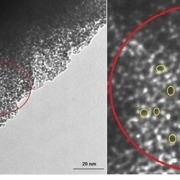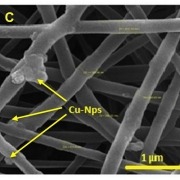The Potential of Green Nano-Biotechnology in Environmental Remediation
 Environmental remediation is the process of cleaning up contaminated sites and restoring them to their natural state. This is a critical task as pollution can have serious health and environmental consequences. In recent years, green nano-biotechnology has emerged as a promising technology for environmental remediation. It involves the use of nanotechnology and biotechnology to create products and processes that are environmentally friendly and sustainable.
Environmental remediation is the process of cleaning up contaminated sites and restoring them to their natural state. This is a critical task as pollution can have serious health and environmental consequences. In recent years, green nano-biotechnology has emerged as a promising technology for environmental remediation. It involves the use of nanotechnology and biotechnology to create products and processes that are environmentally friendly and sustainable.
Green nano-biotechnology has the potential to revolutionize environmental remediation by providing new and innovative ways to clean up contaminated sites while reducing our impact on the environment. One of the most promising areas of application is in the removal of harmful pollutants from soil and groundwater.
Nanotechnology can be used to create highly efficient filters that can remove contaminants from soil or water. For example, nanoparticles can be coated with compounds that attract and bind to specific contaminants, allowing them to be removed from the soil or water. This method is highly effective and can be used to remove a wide range of pollutants including heavy metals, pesticides, and organic chemicals.

Another way that green nano-biotechnology can help with environmental remediation is through the use of bioremediation. Bioremediation is the use of microorganisms to remove pollutants from contaminated sites. Biotechnology can be used to enhance this process by developing microorganisms that are more efficient at breaking down pollutants. This can lead to faster and more effective cleanup of contaminated sites.
Additionally, nanotechnology can be used to create sensors that can detect contamination at an early stage, allowing for quicker response times and more effective cleanup efforts. These sensors can also be used to monitor the effectiveness of cleanup efforts over time, ensuring that contaminated sites remain clear of pollutants.
Despite the numerous benefits of green nano-biotechnology in environmental remediation, there are also some potential risks that need to be addressed. For example, the use of nanomaterials may have unintended consequences on the environment and human health. Therefore, it is important to thoroughly test any new nanomaterials before they are used in products or processes.
Another risk of green nano-biotechnology is the potential for unintended consequences. As with any new technology, it’s difficult to predict all of the ways that it may impact the environment or human health. It’s important to carefully monitor the use of green nano-biotechnology and make adjustments as needed to minimize any negative impacts.
To ensure the safe and effective use of green nano-biotechnology in environmental remediation, regulations and guidelines must be developed and enforced. This includes proper labeling and disclosure of nanomaterials in products, as well as testing and monitoring of these materials throughout their lifecycle.
Collaboration between industry, government, and academia is also necessary to advance the field of green nano-biotechnology and address potential risks and challenges. This includes funding research and development of new technologies and sharing knowledge and resources across sectors.
In conclusion, green nano-biotechnology has the potential to revolutionize environmental remediation by providing new and innovative ways to clean up contaminated sites while reducing our impact on the environment. From highly efficient filters to bioremediation using microorganisms, this field has the power to transform the way we approach environmental cleanup. However, it’s important to proceed with caution and address potential risks and challenges associated with the use of nanomaterials. By working together, we can harness the power of green nano-biotechnology to create a cleaner, safer, and more sustainable world.








Leave a Reply
Want to join the discussion?Feel free to contribute!